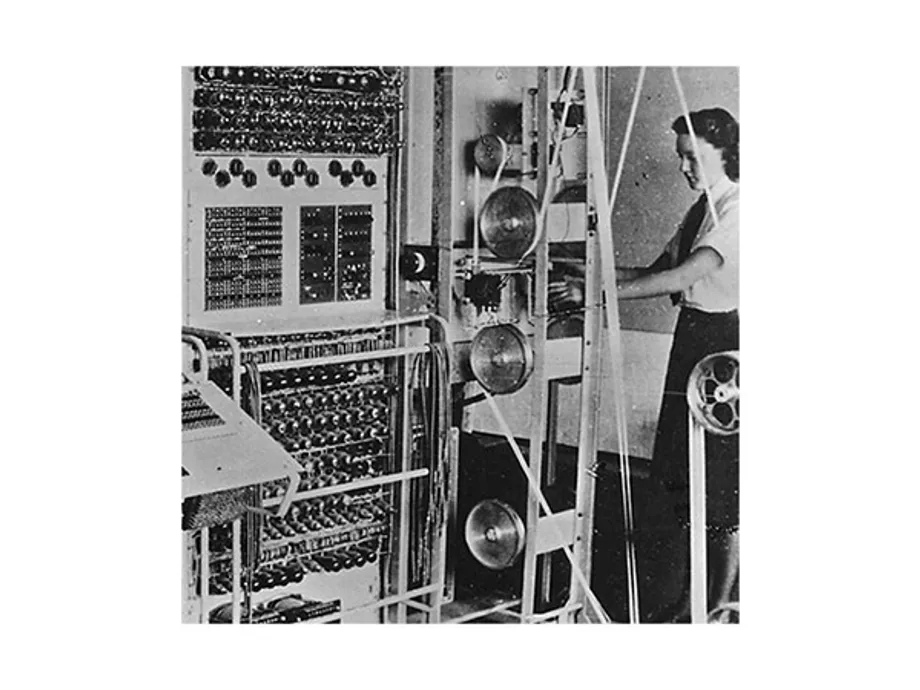Colossus
Colossus was the name of a series of computers developed for British codebreakers in 1943-45 to help in the cryptanalysis of the Lorenz cipher.
Colossus used thermionic valves (vacuum tubes) and thyratrons to perform Boolean and counting operations. Colossus is thus regarded as the worlds first programmable, electronic digital computer , although it was programmed by plugs and switches and not by a stored program.
Colossus was designed by the engineer Tommy Flowers to solve a problem posed by the mathematician Max Newman at the Government Code and Cypher School (GC&CS) at Bletchley Park.
Colossus image
This image shows a Colossus Mark 2 computer being operated by Dorothy Du Boisson (left) and Elsie Booker. The slanted control panel on the left was used to set the pin(or cam) patterns of the Lorenz. The bedstead paper tape transport is on the right.
The improved Colossus Mark 2 used shift registers to quintuple the processing speed compared with the Mark 1 and first worked on 1 June 1944, just in time for the Normandy Landings on D-Day. Ten colossi were in use by the end of the war and an eleventh was being commissioned.

